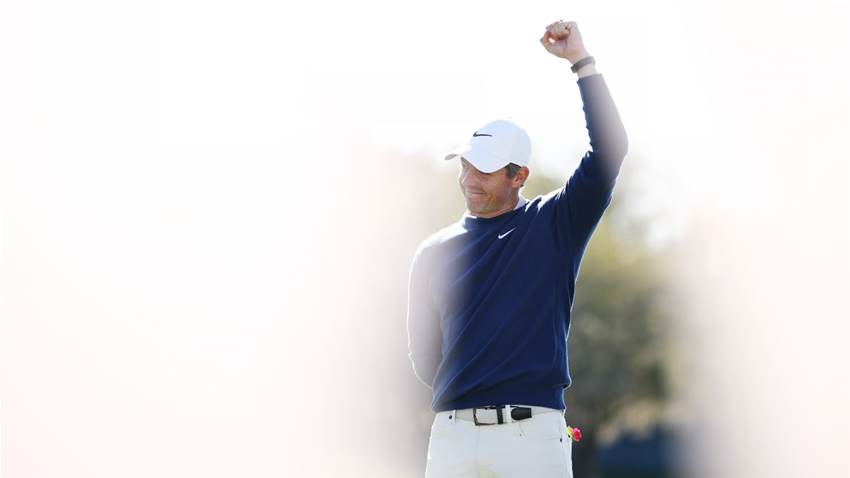As recent events in the male professional game have done nothing but escalate an already tasteless emphasis on money, the suspicion here is that the historical significance of golf’s four major championships is only going to increase.
LIV Golf’s arrival has accelerated the already obvious fracturing of golf at the elite level, making the Masters, USPGA, U.S Open and Open Championship – none fall under the auspices of any major tour – even more important than they were previously.
Which is hard to imagine, given the already peerless prominence enjoyed by the constituent parts of the Grand Slam before the Saudis took a financial interest in the game Scotland gave to the world. But it’s true. Over the last couple of years, the only organisations enjoying the attendance of just about every top player at their top events have been the Augusta National Golf Club, the PGA of America, the United States Golf Association and the Royal and Ancient Golf Club of St Andrews.
The pre-eminence of what might be termed golf’s “four families” has always been smile-provoking, of course, if only because it frustrated the power-crazed ambitions of the PGA Tour, the biggest circuit on the planet. But I digress.
While all of the above is indisputable, a simple adding-up of major victories should never be the sole measure of any player’s ultimate worth. Six versus five, as is the case when rating, say, Nick Faldo against Seve Ballesteros, surely has a place in the debate. But Faldo’s numerical superiority is hardly conclusive. Both were clearly great players (although that definition can often set off another argument) but few would argue Ballesteros wasn’t more consequential.
Think about it. Yes, Faldo had a sizeable fan-base at the height of his powers, but his was nothing compared to the hordes smitten by the mesmeric attributes enjoyed by the mercurial Spaniard. In terms of charisma, it was a no-contest. Where Faldo was admired, Seve was loved.

Here’s the thing, though. Adding to the mix in any dispute regarding the relative merits of Faldo and Ballesteros is the fact they both won two of the four majors – the Masters and the Open. Neither won the U.S PGA or the U.S Open. Which brings me to David Graham, who remains the only Australian male who has won two of the four majors, in his case the U.S PGA and the U.S Open. Is that feat more impressive than Greg Norman’s two Open wins or Peter Thomson’s five? It is a case which can easily be made. Expertise in more than one of the four major disciplines has obvious merit when compared to similar supremacy in just one.
Then there are those who have won three of the four majors. As things stand, only 12 men are on that mark: Rory McIlroy, Jordan Spieth, Phil Mickelson, Ray Floyd, Tom Watson, Tommy Armour, Jim Barnes, Walter Hagen, Byron Nelson, Arnold Palmer, Sam Snead and Lee Trevino. And, let’s face it, only McIlroy and Spieth can still harbour realistic hopes of competing the almost-impregnable quadrilateral which has so far only been achieved by five players (Gene Sarazen, Ben Hogan, Gary Player, Jack Nicklaus and Tiger Woods). The others are either past it (Mickelson), or retired (Player, Trevino, Watson), or long-deceased (Armour, Barnes, Hagen, Nelson, Snead, Palmer). Some are all three.

Anyway, my point is that even lone victories in at least two of the majors is arguably more impressive than multiple wins in one of the four. It is certainly a tie-breaker if two players each have the same number of major wins overall. By way of example, Trevino’s six (two Opens, two U.S Opens and two U.S PGAs) are therefore superior to Faldo’s six (three Opens and three Masters).
Inevitably, this stroll through my major musings must climax with thoughts on McIlroy. Even if Scottie Scheffler and Xander Schauffele end up being the dominant figures in the men’s game during 2025, the Northern Irishman remains the most talked about figure in the game. The four-time major champion’s quest for a green jacket and immortality has lasted more than a decade now, so obvious questions are being asked about his ability to get the job done.
My hopes on that front remain high, though. This past year and even more so in these last few months, McIlroy has shown a commendably high level of performance. But (newsflash) winning a major is tough. Each time McIlroy gets himself high on a leaderboard, he has to beat others playing at the top of their games. Happily though, we can assume none of those guys will, in the moment, be driven by thoughts of money. Amidst the current mess, that is perhaps professional golf’s one saving grace.
Related Articles

Huggan: Is McIlroy the best European golfer of all time?

Column: Rory will grab the headlines but Portrush will steal the show













